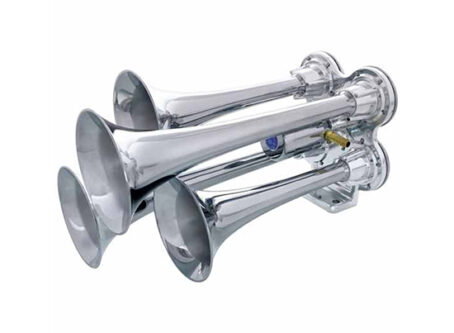Court: sleeper berth time beyond eight hours is compensable
A federal court of appeals has ruled that trucking companies must pay team drivers for time spent in sleeper berths in excess of eight hours.
On Tuesday, Dec. 12, a First Circuit Court of Appeals panel ruled on a case dealing with sleeper berth time for team drivers and pay. The class action lawsuit was filed in 2016 against CRST International and CRST Expedited.
The lengthy court battle centered on who benefits the most from sleeper berth time in team driver operations: the employer or the employee.
CRST’s training program
The lawsuit is based on CRST’s training program, which teams up trainees with experienced drivers.
According to court documents, CRST’s training program includes four phases. The first two phases include acquiring a CDL and a classroom-based course about the use of a CDL. In the third phase, trainees sign an employment contract for eight to 10 months and begin getting paid for driving. It is at this time they are paired with an experienced driver for four weeks of team driving. Stage four pairs trainees with a co-driver to complete the remaining time on the contract.
Typical of team driver operations, CRST drivers will spend their mandatory 10 hours of off-duty time in the sleeper berth after clocking in 14 hours of on-duty time. In the case of the CRST training program, drivers would regularly spend more than 10 hours of sleeper berth time. In some cases, that time was up to 16 hours.
Predominant benefit test
To determine whether or not an employee’s time is compensable, circuit courts have applied what is called the predominant benefit test.
This test states that time is compensable work when it is spent predominantly for the employer’s benefit. In cases involving waiting, which applies to sleeper berth time, time is compensable when an employee is “engaged to wait.” However, that time is not compensable when the employee is “waiting to be engaged.”
CRST argues that sleeper berth time falls under “waiting to be engaged.” During this time, drivers can sleep, fix meals, watch television and access the internet. Meanwhile, the driving teammate is responsible for all work-related duties while the other rests. Therefore, sleeper berth time is primarily for the employee’s benefit.
CRST also argues that DOT regulations classify sleeper berth time as off-duty and non-compensable. However, the First Circuit found that DOT regulations deal with safety, not compensation. Questions of pay are answered by Department of Labor regulations.
On the other hand, plaintiffs argue that since drivers are confined to the restrictive environment of the sleeper berth, such time predominantly benefits the employer.
Plaintiffs point out that the whole point of team drivers is to keep the truck moving while rest periods are being taken, thereby increasing profits.
The First Circuit agreed with plaintiffs’ argument regarding confinement.
“The minimum height of the sleeper berth is a mere 24 inches as measured from the top of the mattress installed in the berth … meaning that drivers may struggle to stand or even sit up in bed in the sleeper berth,” the court panel states. “The driver in the sleeper berth is also in constant proximity to the noise of the truck’s engine, further reducing drivers’ ability to sleep, relax or engage in leisure activities of their choice. In short, CRST’s argument that the drivers’ time is their own because they can use it as they wish is unpersuasive considering the drivers’ physical confinement in a restrictive space that is ill-equipped for many activities.”
The court also found that the fact that team drivers are traveling during sleeper berth time suggests that such time is for CRST’s benefit.
“Indeed, CRST understands the necessity of drivers’ sleeper berth time to the company’s bottom line, explaining that its team driving model allows it to ‘get twice the utilization out of the truck and keep that cargo moving . . . 20 hours a day or more,’” the court states. “Such speed of travel is made possible only by the resting driver resetting their driving hours in the sleeper berth while their teammate continues to drive.”
Lastly, the First Circuit points out that the driving teammate may call on the resting teammate to provide emergency assistance, even during the mandatory 10-hour off-duty period.
Department of Labor regulations
Two Department of Labor regulations are at the heart of the sleeper berth compensation case.
The first regulation, 29 C.F.R. Section 785.22, states:
“Where an employee is required to be on duty for 24 hours or more, the employer and the employee may agree to exclude bona fide meal periods and a bona fide regularly scheduled sleeping period of not more than eight hours from hours worked … If the sleeping period is of more than eight hours, only eight hours will be credited.”
Meanwhile, Section 785.41 reads:
“Any work which an employee is required to perform while traveling must, of course, be counted as hours worked. An employee who drives a truck … or an employee who is required to ride therein as an assistant or helper, is working while riding, except … when he is permitted to sleep in adequate facilities furnished by the employer.”
CRST argues that Section 785.41 applies since drivers are not on duty for 24 hours or more based on the idea that sleeper berth time is not spent working. Department of Transportation regulations allow truckers to be on-duty for no more than 14 hours.
However, using the predominant benefit test, the First Circuit determined that sleeper berth time is “on duty.” Therefore, Section 785.22 will apply in this case.
“Taken to its logical conclusion, CRST’s reading of Section 785.41 would permit employers to avoid compensating drivers by confining them to the sleeper berth for an unlimited number of hours simply because that is time in which they are ‘permitted to sleep,’ even though – as CRST acknowledged in a deposition – it is unreasonable to propose that a driver would be sleeping for the 10 or more hours per day spent in the sleeper berth.”
Both the district court and appellate court determined that both regulations are to be considered together. Therefore, the courts found, in team driver operations, drivers are entitled to be paid for sleeper berth time beyond eight hours. LL
Related stories:









